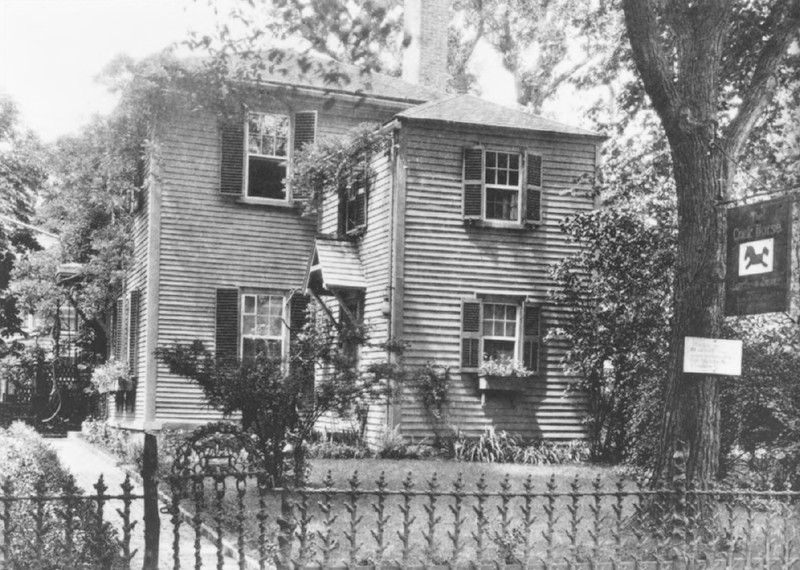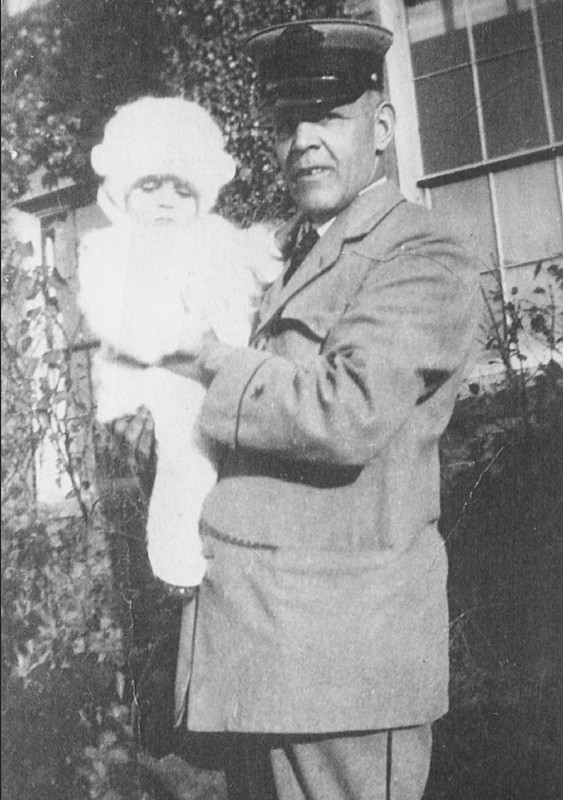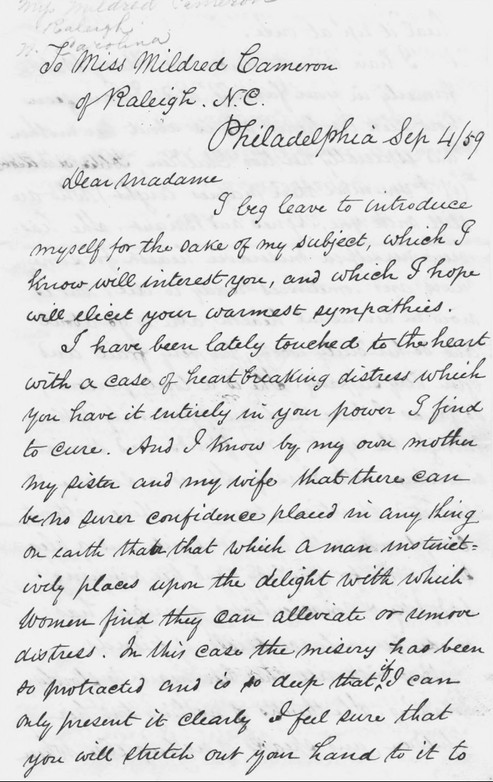Mary Walker - The Blacksmith House/Dexter Pratt House
Introduction
Text-to-speech Audio
Mary Walker (1818-1873) was born into slavery in 1818 in North Carolina. She escaped in 1848 to Philadelphia and later settled in Massachusetts in 1850 to avoid the Fugitive Slave Law passed that year. Walker worked as a skilled caretaker and seamstress over the course of her life, never ceasing her efforts to free her mother and children from enslavement. Walker was eventually reunited with her two youngest children at the end of the Civil War. Her mother passed away and her oldest son escaped to New Jersey, though there is no record of a reunion. In June 1870, the Blacksmith House, now known as the Dexter Pratt House, at 54 Brattle Street in Cambridge, Massachusetts came under Walker's ownership. The home remained in her family until the early 20th century and is now owned and used by the Cambridge Center for Adult Education.
Images
Brattle Street house, ca. 1937

Frederick Walker, Mary Walker's grandson who grew up in the family home and was a Cambridge postman for 25 years

One of three surviving letters written by Mary Walker, addressed to Susan Lesley
_0.jpg)
Letter by Peter Lesley to Mildred Cameron seeking the release of Mary Walker's children

Backstory and Context
Text-to-speech Audio
Mary Walker was born in 1818 on Duncan Cameron’s plantation in North Carolina. While growing up, Walker learned how to read and write, and she authored many letters, only three of which we have today. From 1846 to 1848, Walker accompanied Cameron and his daughter, who was ill, to Philadelphia on three medical trips. During the last trip, Walker escaped after Cameron threatened to banish her to the Deep South when they returned to North Carolina, leaving behind her mother and three children. Walker remained safe in Philadelphia because of the 1847 Personal Liberty Law, which gave enslaved people a path to freedom. In Philadelphia, she was employed by James Lesley and used her skills as a seamstress to make shirts for him and other garments for customers.
The passing of the Fugitive Slave Law of 1850 threatened Walker’s safety in Philadelphia, so Lesley bought Walker a train ticket to Boston. Walker then stayed with Lesley’s cousin, J. Peter Lesley, and his wife Susan Lesley in Milton, Massachusetts. Walker later built a life for herself in Cambridge, where she became a caretaker for Susan Lesley’s mother Anne Jean Lyman and became well-known for her sewing skills. Although Walker had a good reputation and work life in the North, she desperately missed the three children that she had left behind. Walker worked assiduously to free her children over the next decade, enlisting the help of the Lesleys, Frederick Douglass, Harriet Beecher Stowe, and others. Walker’s oldest son escaped from the Cameron family in 1852 but was not able to reach her, and she was only reunited with her two other children, Agnes and Bryant, after the Civil War. Walker’s story is a testament to the fact that even slavery could not eviscerate the generational ties and relational bonds of Black families.
Walker wanted to give her family housing stability when they arrived in the North but did not have enough funds to purchase property herself. Fortunately, Walker had developed a good relationship with the Howe family while serving as a caregiver for Sarah Robbins Howe, the sister of Anne Jean Lyman, during her last few months of life. In 1870, Howe’s sons, James Murray and Estes, purchased a home for Walker at 54 Brattle Street to express their gratitude. The house, a two-story wooden building, was a short distance from the African American hub of Cambridgeport, but it was large enough to house all of Walker’s family. Committed to the idea of maintaining a sense of stability and security for her family, Walker wrote in her will that the house could not be sold until her youngest grandchild had turned twenty-one. This formerly enslaved woman, who herself used to be considered property, was not only able to own her own property but also maintained the house’s connection to her familial descendants until it was sold in 1912.
Walker’s numerous business connections and friends also allowed her to help her children find work in Cambridge. Her good reputation as a skilled seamstress and caretaker in addition to her property helped her family to stay in Cambridge for many years. Mary Jacobs also lived a short six-minute walk away from Harriet Jacobs’s boarding house at 17 Story St. / 127 Mt. Auburn St, and the two women had much in common. Both had lived in North Carolina and bore mixed-race children. Both had escaped slavery before their children were free, and both devoted much of their lives to pursuing the freedom of their families. Mary Walker had read Jacobs’s memoir Incidents of the Life of a Slave Girl, and Chauncey Wright, who had stayed at both of their boarding houses, wrote that he had once had a conversation with Walker’s daughter and Harriet Jacobs together.
Sources
1. Letter from Mary Walker to Susan Lesley, undated by Valerie-Anne Lutz. Accessed May 7, 2021. https://www.amphilsoc.org/blog/letter-mary-walker-susan-lesley-undated-0.
2. "Mary Walker." African American Heritage Trail. Accessed May 7, 2021. https://mountauburn.org/aaht-walker/.
3. Nathans, Sydney. To Free a Family: The Journey of Mary Walker. Harvard University Press. (2012).
4. Bae, Lena S. "Mary Walker's Family Story." The Crimson. Accessed May 7, 2021. https://www.thecrimson.com/article/2012/2/29/mary_walker_story/.
5. Handy, Delores. "Harvard Square's Blacksmith House Has Untold Connection To Runaway Slave." WBUR News. Accessed May 7, 2021. https://www.wbur.org/news/2012/02/21/mary-walker-runaway-slave.
6. Yellin, Jean. Harriet Jacobs: A Life. Civitas Book. (2004).
Cambridge Center for Adult Education
Clare Dubé Kenney
American Philosophical Society
Southern Historical Collection
